Nuclear Strategic Thought
Deterrence theory has inspired critical reflections of classical ideas, but was also influenced by Clausewitz and air power theory. New concepts enabled theory-building in the absence of nuclear war, but did not lead to universally accepted paradigms in nuclear strategy. While civilians took on a leading role on strategy in the US, their influence on nuclear strategy in particular, and perspectives on deterrence, have been divergent elsewhere.
- Freedman, L. (2013). Strategy : A history. Oxford University Press, Incorporated.
- Freedman, L. (2003). Evolution of nuclear strategy. Palgrave Macmillan Limited.
- Gray, C.S. (1999), Modern Strategy.Oxford: Oxford University Press.
- Heuser, B. (2010). Evolution of strategy : Thinking war from antiquity to the present. Cambridge University Press.
- Mahnken, T. G., & Maiolo, J. A. (Eds.). (2014). Strategic studies: A reader. Taylor & Francis Group.
- Manwaring, Max G. (2001). Deterrence in the 21st century.London: Frank Cass
- Paret, P., Craig, G. A., & Gilbert, F. (Eds.). (1986). Makers of modern strategy from machiavelli to the nuclear age. Princeton University Press.
- Brodie, B. (1946).The Absolute Weapon. Atomic Power and World Order. New York: Harcourt.
- Brodie, B. (1959). Strategy in the Missile Age. Princeton: Princeton University Press. https://doi.org/10.1515/9781400875108
- Brodie, B. War and Politics. London: Cassell, 1974.
- Bull, Hedley. The Control of the Arms Race. London: Weidenfeld & Nicolson, 1961.
- Schelling, Thomas. C. (1967). Arms and Influence. Yale University Press.
- C. Schelling and Morton Halperin (1985). Strategy and Arms Control. Pergamon.
- Gray, C.S. (1979). Nuclear Strategy: the Case for a Theory of Victory. International Security4(1), 54-87.
- Gray, Colin S. ‘War-Fighting for Deterrence’. Journal of Strategic Studies 7, no. 1 (1984): 5– 28.
- Kahn, H. (2011). On Thermonuclear War. War and Peace Research. Transaction Publishers.
- Kissinger, Henry (1957). Nuclear Weapons and Foreign Policy, New York: Harper.
- Wohlstetter, A. (1959). The Delicate Balance of Terror. Foreign Affairs, 37(2), 211–234. https://doi.org/10.2307/20029345
- George, A. (1994). The Limits of Coercive Diplomacy.
- Jervis, Robert. (1979). Deterrence Theory Revisited. World Politics,31(2), 289-324.
- Robert Jervis. The Meaning of the Nuclear Revolution: Statecraft and the Prospect of Armageddon. Ithaca, NY: Cornell University Press, 1989.
- Richard Ned Lebow and Janice Gross Stein, We all Lost the Cold War(Princeton: Princeton University Press, 1994).
- Scott D. Sagan and Kenneth N. Waltz, The Spread of Nuclear Weapons: A Debate Renewed(W.W. Norton: New York, 2002).
- Jeffrey W. Knopf (2010) The Fourth Wave in Deterrence Research, Contemporary Security Policy, 31:1, 1-33, DOI: 1080/13523261003640819
- Bell, Mark S. Nuclear Reactions: How Nuclear-Armed States Behave. Ithaca, NY: Cornell University Press, 2021.
- Brendan Rittenhouse Green, The Revolution that Failed: Nuclear Competition, Arms Control, and the Cold War (Cambridge: Cambridge University Press, 2020)
- Kroenig, Matthew. The Logic of American Nuclear Strategy: Why Strategic Superiority Matters. Oxford: Oxford University Press, 2018.
- Keir A. Lieber and Daryl G. Press, The Myth of the Nuclear Revolution: Power Politics in the Atomic Age (Ithaca, NY: Cornell University Press, 2020)
- Mueller, John. Atomic Obsession: Nuclear Alarmism from Hiroshima to Al-Qaeda. Oxford: Oxford University Press, 2012.
- Benoit Pelopidas, “The Unbearable Lightness of Luck: Three Sources of Overconfidence in the Controllability of Nuclear Crises,” European Journal of International Security, 2017, 2(2), pp.240-262.
- Sechser, Todd S., and Matthew Fuhrmann. ‘Crisis Bargaining and Nuclear Blackmail’. International Organization 67, no. 1 (2013): 173–95.
- Tannenwald, Nina. The Nuclear Taboo: The United States and the Non-Use of Nuclear Weapons Since 1945. Cambridge: Cambridge University Press, 2007.
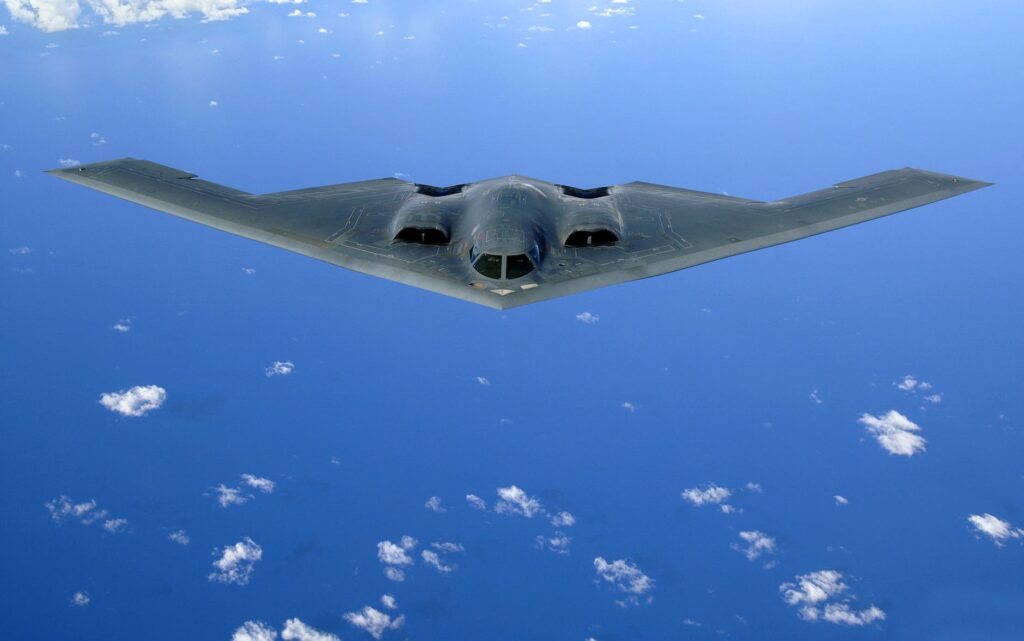
“Thus far, the chief purpose of our military establishment has been to win wars. From now on, its chief purpose must be to avert them.”
— Bernard Brodie, 1946
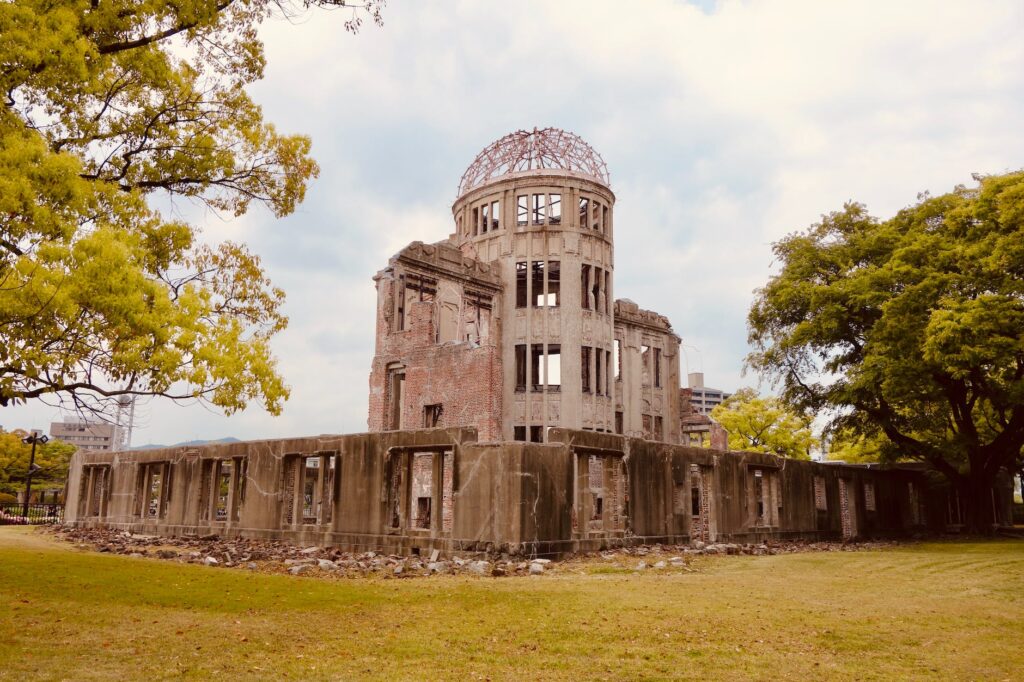
Nuclear Injustice
Nuclear injustice refers to the ethical, social, and geopolitical disparities arising from the possession and potential use of nuclear weapons. This concept encompasses issues such as the uneven distribution of nuclear capabilities among states, the disproportionate impact of nuclear testing and accidents on marginalized communities, and the challenges posed by nuclear proliferation. The nuclear powers’ monopoly on these weapons often leads to a power imbalance, perpetuating global inequalities and heightening the risk of conflict.
- Alexis‐Martin, B., Bolton, M. B., Hawkins, D., Tisch, S., & Mangioni, T. L. (2021). Addressing the Humanitarian and Environmental Consequences of Atmospheric Nuclear Weapon Tests: A Case Study of UK and US Test Programs at Kiritimati (Christmas) and Malden Islands, Republic of Kiribati. Global Policy, 12(1), 106–121.
- Borrie, John; Spies, Michael; Wan, Wilfred (2018): Obstacles to understanding the emergence and significance of the treaty on the prohibition of nuclear weapons. In Global Change, Peace & Security 30 (2), pp. 95–119. DOI: 10.1080/14781158.2018.1467394.
- Davis-Gibbons, Rebecca (2018): The humanitarian turn in nuclear disarmament and the Treaty on the Prohibition of Nuclear Weapons. In The Nonproliferation Review 25 (1-2), pp. 11–36. DOI: 10.1080/10736700.2018.1486960.
- Sauer, Tom; Reveraert, Mathias (2018): The potential stigmatizing effect of the Treaty on the Prohibition of Nuclear Weapons. In The Nonproliferation Review 25 (5-6), pp. 437–455. DOI: 10.1080/10736700.2018.1548097.
- Tannenwald, N. 2013. “Justice and Fairness in the Nuclear Nonproliferation Regime” Ethics & International Affairs 27(3): 299-317.
- Biswas, S. 2014. Nuclear Desire: Power and the Postcolonial Nuclear Order. Minneapolis: University of Minnesota Press.
- Gusterson, H. (1999). Nuclear Weapons and the Other in the Western Imagination. Cultural Anthropology, 14(1), 111–143.
- Hugh Gusterson, Paranoid, “Potbellied Stalinist Gets Nuclear Weapons: How the U.S. Print Media Cover North Korea,” The Nonproliferation Review, 15:1 (2008), 21-42.
- Intondi, V. (2015). African Americans Against the Bomb: Nuclear Weapons, Colonialism, and the Black Freedom Movement. Redwood City: Stanford University Press.
- Matthew Jones, After Hiroshima: The United States, Race and Nuclear Weapons in Asia, 1945–1965 (New York: Cambridge University Press, 2010).
- Anne Harrington de Santana, “Nuclear Weapons as a Currency of Power: Deconstructing the Fetishism of Force,” The Nonproliferation Review, (November 2009), Vol. 16, No. 3, 325-345.
- Acheson, Ray (2021). Banning the Bomb, Smashing the Patriarchy. Rowman & Littlefield Publishers / Rowman & Littlefield International.
- Cohn, C. (1987). Sex and Death in the Rational World of Defense Intellectuals. Signs: Journal of Women in Culture and Society, 12(4), 687–718.
- Cohn, C. (2018). The perils of mixing masculinity and missiles. New York Times (Online)New York Times Company. Jan 5, 2018.
- Enemark, C. (2011). Farewell to WMD: The Language and Science of Mass Destruction. Contemporary Security Policy, 32(2), 382–400.
“Each State Party in a position to do so shall provide assistance for the victims of the use or testing of nuclear weapons or other nuclear explosive devices.”
— Article 7.4, Treaty on the Prohibition of Nuclear Weapons, 2017
International Cooperation
Nations around the world recognize the importance of working together to prevent the spread of nuclear weapons, reduce existing arsenals, and ultimately create a safer international environment. Treaties such as the Treaty on the Non-Proliferation of Nuclear Weapons (NPT) serve as pillars of international cooperation, fostering dialogue and commitment among states. Collaborative efforts seek to strengthen verification mechanisms, promote transparency, and enhance trust among nations.
- Adler, E. (1992) ‘The Emergence of Cooperation: National Epistemic Communities and the International Evolution of the Idea of Nuclear Arms Control’, International Organization, 46(1), pp. 101–145.
- James Cameron, The Double Game: The Demise of America’s First Missile Defense System and the Rise of Strategic Arms Limitation (New York: Oxford University Press, 2017)
- Nancy W. Gallagher (2015) Re-thinking the Unthinkable: Arms Control in the Twenty-First Century, The Nonproliferation Review, 22:3-4, 469-498.
- Jervis, R. (2022). The Many Faces of SALT. Journal of Cold War Studies, 24(4), 198–214.
- Michael A. Levi and Michael E. O’Hanlon, The Future of Arms Control (Brookings, 2005).
- John D. Maurer, “The Purposes of Arms Control,” Texas National Security Review 2, no. 1 (2018).
- Schelling, T.C. (1985) ‘What Went Wrong with Arms Control?’, Foreign Affairs, 64(2), pp. 219–233.
- Thomas Schelling and Morton Halperin, Strategy and Arms Control (The Twentieth Century Fund, 1961), (re-issued 1985, with new introduction).
- Scott Sagan, The Limits of Safety: Organizations, Accidents and Nuclear Weapons (Princeton University Press, 1993).
- Tannenwald, N. (2020) ‘Life beyond Arms Control: Moving toward a Global Regime of Nuclear Restraint & Responsibility’, Daedalus, 149(2), pp. 205–221.
- Mark S. Bell, Examining Explanations for Nuclear Proliferation, International Studies Quarterly, Volume 60, Issue 3, September 2016, Pages 520–529.
- Budjeryn, Mariana and Andreas Umland. “Damage Control: The Breach of the Budapest Memorandum and the Nuclear Non-Proliferation Regime.” Ibidem Press, March 2021.
- Alexandre Debs and Nuno P. Monteiro, Nuclear Politics: The Strategic Causes of Proliferation (Cambridge University Press, 2017).
- Francis J. Gavin; Strategies of Inhibition: U.S. Grand Strategy, the Nuclear Revolution, and Nonproliferation. International Security2015; 40 (1): 9–46.
- Horowitz, M. (2009). The Spread of Nuclear Weapons and International Conflict: Does Experience Matter? Journal of Conflict Resolution, 53(2), 234-257.
- Jacques E. C. Hymans, The Psychology of Nuclear Proliferation: Identity, Emotions and Foreign Policy (Cambridge: Cambridge University Press, 2006).
- Knopf, Jeffrey (2012). Security Assurances and Nuclear Non-Proliferation.
- Matthew Kroenig, Exporting the Bomb: Technology Transfer and the Spread of Nuclear Weapons (Ithaca, NY: Cornell University Press, 2010).
- Levite, Ariel (2002). Never say never again: Nuclear reversal revisited. International Security, Volume 27 Number 3.
- Nicholas L. Miller, “Nuclear Dominoes: A Self-Defeating Prophecy?,” Security Studies 23, no. 1 (2014): 33–73.
- Pilat, Joseph (ed.) (2019). Nuclear Latency and Hedging: Concepts, History and Issues. Wilson Center.
- Scott D. Sagan, “Why do States Build Nuclear Weapons?: Three Models in Search of a Bomb,” International Security, (Winter 1996-1997), 21:3, 54-86.
- Sagan, Scott D. “The Causes of Nuclear Weapons Proliferation.” The Annual Review of Political Science 14 (2011): 225–44.
- Schneider, Jonas (2020). Beyond Assurances and Coercion. US Alliances and the Psychology of Nuclear Reversal. Security Studies Volume 29 Issue 5.
- Solingen, Etel (ed.) (2012). Sanctions, Statecraft and Nuclear Proliferation.
- Tristan A. Volpe (2017) Atomic Leverage: Compellence with Nuclear Latency, Security Studies, 26:3, 517-544.
- Wirtz, James J. Wirtz and Peter R. Lavoy (eds.) (2012). Over the Horizon Proliferation Threats.
- Beatrice Fihn (2017) The Logic of Banning Nuclear Weapons, Survival, 59:1, 43-50.
- Harold A. Feiveson, Alexander Glaser, Zia Mian, and Frank von Hippel, Unmaking the Bomb: A Fissile Material Approach to Nuclear Disarmament and Nonproliferation (MIT Press, 2014).
- Hajnoczi, Thomas (2020): The Relationship between the NPT and the TPNW. In Journal for Peace and Nuclear Disarmament 3 (1), pp. 87–91.
- Jeffrey Knopf, “Nuclear Disarmament and Nonproliferation: Examining the Linkages Argument,” International Security 37:3 (Winter 2012/2013), pp. 92-132.
- Müller, Harald; Wunderlich, Carmen (2020): Nuclear Disarmament without the Nuclear-Weapon States: The Nuclear Weapon Ban Treaty. In Daedalus 149 (2), pp. 171–189.
- Ritchie, N., & Pelopidas, B. (2015). European nuclear nationalism: UK and French perspectives on nuclear disarmament. In Global Nuclear Disarmament (pp. 225–250). Routledge.
- Steen, B., & Njølstad, O. (Eds.). (2019). Nuclear Disarmament: A Critical Assessment (1st ed.). Routledge.
- Charles D. Ferguson and William C. Potter, The Four Faces of Nuclear Terrorism (Routledge, 2006).
- Hobbs, Christopher, Sarah Tzinieris, and Sukesh K. Aghara (eds), The Oxford Handbook of Nuclear Security(online edn, Oxford Academic, 22 May 2023), https://doi.org/10.1093/oxfordhb/9780192847935.001.0001
- Lieber, Keir A., and Daryl G. Press. ‘Why States Won’t Give Nuclear Weapons to Terrorists’. International Security 38, no. 1 (2013): 80–104.
- McIntosh, C. and Storey, I. (2018) ‘Between Acquisition and Use: Assessing the Likelihood of Nuclear Terrorism’, International Studies Quarterly, 62(2), pp. 289–300.
- John Mueller, Overblown: How Politicians and the Terrorism Industry Inflate National Security Threats and Why We Believe Them (Free Press, 2006).
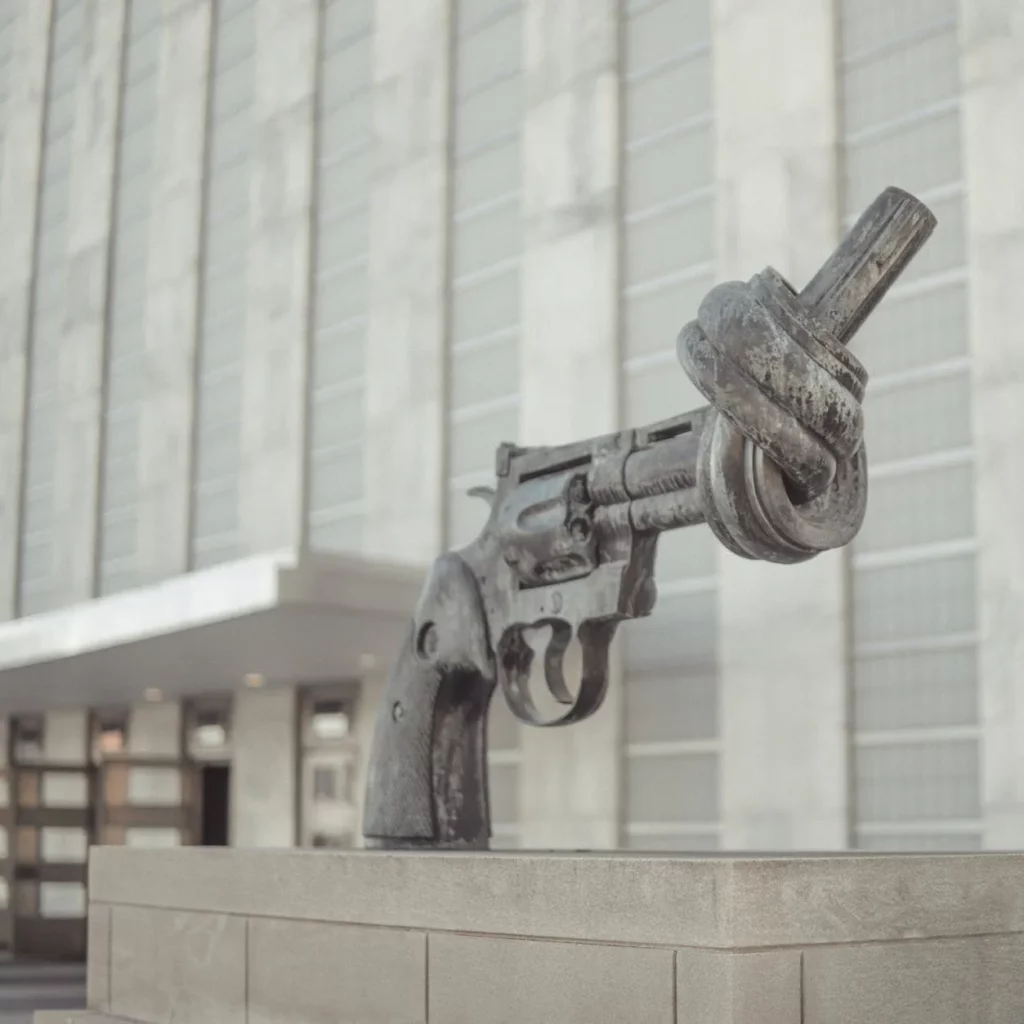
“Each of the Parties to the Treaty undertakes to pursue negotiations in good faith on effective measures relating to cessation of the nuclear arms race at an early date and to nuclear disarmament, and on a treaty on general and complete disarmament under strict and effective international control.”
— Article VI, Treaty on the Non-Proliferation of Nuclear Weapons, 1970
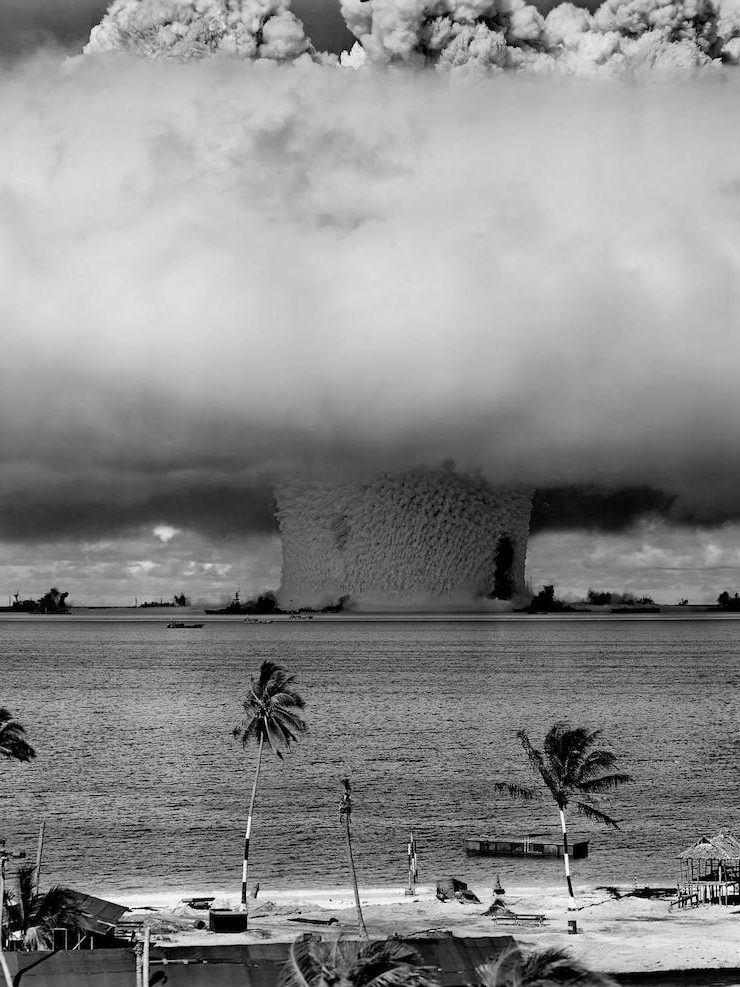
Nuclear-Weapons Powers
The recognized nuclear-armed states include the United States, Russia, China, France, and the United Kingdom—the five permanent members of the United Nations Security Council. Additionally, India and Pakistan openly acknowledge possessing nuclear arsenals, while Israel is widely believed to have nuclear weapons, although it maintains a policy of ambiguity. North Korea has conducted nuclear tests and claims to have a nuclear weapons capability, although its status remains a subject of international concern and debate.
- Missiles of the World. CSIS Missile Defense Project. https://missilethreat.csis.org/missile/
- Nuclear Notebook. Nuclear Arsenals of the World. Bulletin of the Atomic Scientists. https://thebulletin.org/nuclear-notebook/
- Goldstein, Avery (2000). Deterrence and Security in the 21st Century: China, Britain, France, and the Enduring Legacy of the Nuclear Revolution. Stanford, Calif.: Stanford University Press.
- Heuser, Beatrice (1998). Nuclear Mentalities? Strategies and Beliefs in Britain, France and the FRG. London: Palgrave Macmillan.
- Paul Kapur, Dangerous Deterrent: Nuclear Weapons Proliferation and Conflict in South Asia (Stanford, CA: Stanford University Press, 2007)
- Narang, Vipin. Nuclear Strategy in the Modern Era: Regional Powers and International Conflict. Princeton, NJ: Princeton University Press, 2014.
- Francis J. Gavin, Nuclear Weapons and American Grand Strategy (Washington, DC: Brookings Institution Press, 2020)
- Charles Glaser, Austin Long, Brian Radzinsky (2022). Managing U.S. Nuclear Operations in the 21st Century. Washington, D.C.: Brookings.
- Green, B. R., & Long, A. (2016). The Geopolitical Origins of U.S. Hard-Target-Kill Counterforce Capabilities and MIRVs. In M. Krepon & T. Wheeler (Eds.), The Lure and Pitfalls of MIRVs: From the First to the Second Nuclear Age (pp. 19–54). Stimson Center.
- Leslie R. Groves, Now It Can Be Told: The Story of the Manhattan Project (New York: De Capo Press, 1975)
- Matthew Jones, “Prelude to the Skybolt Crisis: The Kennedy Administration’s Approach to British and French Strategic Nuclear Policies in 1962,” Journal of Cold War Studies 21, no. 2 (2019): 58–109.
- Nicholas L. Miller, Stopping the Bomb: The Sources and Effectiveness of U.S. Nonproliferation Policy (Ithaca, NY: Cornell University Press, 2018).
- Wilson D. Miscamble, The Most Controversial Decision: Truman, the Atomic Bombs, and the Defeat of Japan (Cambridge: Cambridge University Press, 2011).
- Niccolò Petrelli & Giordana Pulcini (2018) Nuclear Superiority in the Age of Parity: US Planning, Intelligence Analysis, Weapons Innovation and the Search for a Qualitative Edge 1969–1976, The International History Review, 40:5, 1191-1209.
- Richard Rhodes, The Making of the Atomic Bomb (New York: Simon & Schuster, 1995).
- Sagan, S.D. and Weiner, A.S. (2021) ‘The Rule of Law and the Role of Strategy in U.S. Nuclear Doctrine’, International Security, 45(4), pp. 126–166.
- Spinardi, G. (1990). Why the U.S. Navy went for Hard-Target Counterforce in Trident II: (And Why it Didn’t Get There Sooner). International Security, 15(2), 147.
- Yost, David S. “The US Debate on NATO Nuclear Deterrence.” International Affairs 87, No.6 (2011): 1401–38.
- Arbatov, A. (2018) ‘The vicissitudes of Russian missile defense’, Bulletin of the Atomic Scientists, 74(4), pp. 227–237.
- Brendan R. Green & Austin Long (2017) The MAD Who Wasn’t There: Soviet Reactions to the Late Cold War Nuclear Balance, Security Studies, 26:4, 606-641.
- David Hoffman, The Dead Hand: The Untold Story of the Cold War and Its Dangerous Legacy (Doubleday, 2009).
- David Holloway, Stalin and the Bomb: The Soviet Union and Atomic Energy, 1939–1956 (New Haven, CT: Yale University Press, 1996)
- Hanna Notte, Sarah Bidgood, Nikolai Sokov, Michael Duitsman & William Potter (2021) Russia’s novel weapons systems: military innovation in the post-Soviet period, The Nonproliferation Review, 28:1-3, 61-93.
- Stephen Shenfield, The Nuclear Predicament: Explorations in Soviet Ideology (Routledge & Kegan Paul, 1987).
- Baylis, John, and Kristan Stoddart. The British Nuclear Experience: The Role of Beliefs, Culture, and Identity. Oxford: Oxford University Press, 2015.
- Lawrence Freedman, Britain and Nuclear Weapons (Basingstoke: Macmillan Press, 1980).
- Gill, David J. Britain and the Bomb: Nuclear Diplomacy, 1964-1970. Stanford: Stanford University Press, 2014.
- Margaret Gowing and Laura Arnold, Independence and Deterrence: Britain and Atomic Energy, 1945–1952, vol. 1, Policy Making (London: Macmillan, 1974).
- J. R. Groom, British Thinking about Nuclear Weapons (London: Pinter, 1974).
- Jones, Matthew. The Official History of the UK Strategic Nuclear Deterrent: From the VBomber Era to the Arrival of Polaris, 1945-1964 Vol. 1. London: Routledge, 2017.
- Jones, Matthew. The Official History of the UK Strategic Nuclear Deterrent: The Labour Government and the Polaris Programme, 1964-1970 Vol. 2. London: Routledge, 2017.
- Martin S. Navias, Nuclear Weapons and British Strategic Planning, 1955–1958 (Oxford: Clarendon Press, 1991).
- Quinlan, Michael (2009). Thinking about Nuclear Weapons: Principles, Problems, Prospects. Oxford: Oxford University Press.
- Stoddart, Kristan. Losing an Empire and Finding a Role: Britain, the USA, NATO and Nuclear Weapons, 1964-70. Basingstoke: Palgrave Macmillan, 2012.
- Stoddart, Kristan. The Sword and the Shield: Britain, America, NATO, and Nuclear Weapons, 1970-1976. Basingstoke: Palgrave Macmillan, 2014.
- Philip H. Gordon, “Charles de Gaulle and the Nuclear Revolution,” in Cold War Statesmen Confront the Bomb: Nuclear Diplomacy since 1945, ed. John Lewis Gaddis (Oxford: Oxford University Press, 1999).
- Kohl, Wilfrid L. French Nuclear Diplomacy. Princeton: Princeton University Press, 1971.
- Mendl, Wolf. Deterrence and Persuasion: French Nuclear Armament in the Context of National Policy, 1945-1969. London: Faber & Faber, 1970.
- Pelopidas, Benoît, and Sébastien Philippe. “Unfit for Purpose: Reassessing the Development and Deployment of French Nuclear Weapons (1956–1974).” Cold War History 21, No.3 (2021): 243–60.
- Lawrence Scheinman, Atomic Energy Policy in France under the Fourth Republic (Princeton, NJ: Princeton University Press, 1965).
- Tertrais, Bruno. “Destruction Assuree: The Origins and Development of French Nuclear Strategy, 1945-1981.” In Getting MAD: Nuclear Mutual Assured Destruction, Its Origins and Practice. Edited by Henry D. Sokolski. Carlisle: Strategic Studies Institute, 2004.
- Tertrais, Bruno. “The Last to Disarm? The Future of France’s Nuclear Weapons.” Nonproliferation Review 14, No.2 (2007): 251–73.
- Yost, David S. “France’s New Nuclear Doctrine.” International Affairs 82, No.4 (2006): 701–21.
- Fiona S. Cunningham, M. Taylor Fravel; Dangerous Confidence? Chinese Views on Nuclear Escalation. International Security2019; 44 (2): 61–109. doi: https://doi.org/10.1162/isec_a_00359
- Taylor Fravel, Evan S. Medeiros; China’s Search for Assured Retaliation: The Evolution of Chinese Nuclear Strategy and Force Structure. International Security2010; 35 (2): 48–87. doi: https://doi.org/10.1162/ISEC_a_00016
- Halperin, Morton (1965). China and the Bomb. New York: Praeger.
- Henrik Stålhane Hiim, M. Taylor Fravel, Magnus Langset Trøan; The Dynamics of an Entangled Security Dilemma: China’s Changing Nuclear Posture. International Security2023; 47 (4): 147–187. doi: https://doi.org/10.1162/isec_a_00457
- Alastair Iain Johnston, “China’s ‘New Old Thinking’: The Concept of Limited Deterrence,” International Security 20, no. 3 (1995/1996): 5–42.
- Li Bin; The Revival of Nuclear Competition in an Altered Geopolitical Context: A Chinese Perspective. Daedalus2020; 149 (2): 56–68. doi: https://doi.org/10.1162/daed_a_01789
- Li Bin. (2015). Chinese thinking on nuclear weapons.Arms Control Today, 45(10), 8-13.
- Lewis, J. & Xue, L. (1988). China Builds the Bomb. Redwood City: Stanford University Press. https://doi.org/10.1515/9781503621473
- Lewis, Xue, L., & Matthews, B. (1994). China’s strategic seapower : the politics of force moderinization in the nuclear age. Stanford University Press.
- Caitlin Talmadge, “Would China Go Nuclear? Assessing the Risk of Chinese Nuclear Escalation in a Conven[1]tional War with the United States,” International Security 41, no. 4 (2017): 50–92.
- Tong Zhao (2022) China and the international debate on no first use of nuclear weapons, Asian Security, 18:3, 205-213, DOI: 1080/14799855.2021.2015654
- S. Paul Kapur, “India and Pakistan’s Unstable Peace: Why Nuclear South Asia Is Not Like Cold War Europe,” International Security 30, no. 2 (2005): 127–152.
- Feroz Hassan Khan, Eating Grass: The Making of the Pakistani Bomb (Stanford, CA: Stanford University Press, 2012).
- Sumit Ganguly and Devin T. Hagerty, Fearful Symmetry: India-Pakistan Crises in the Shadow of Nuclear Weapons (Seattle: University of Washington Press, 2005).
- Ashley J. Tellis, C. Christine Fair, and Jamison Jo Medby, Limited Conflicts under the Nuclear Umbrella: Indian and Pakistani Lessons from the Kargil Crisis (Santa Monica, CA: RAND Corporation, 2002).
- Vipin Narang, “Posturing for Peace? Pakistan’s Nuclear Postures and South Asian Stability,” International Security 34, no. 3 (2009–2010): 38–78.
- Itty Abraham, The Making of the Indian Atomic Bomb: Science, Secrecy and the Postcolonial State (London: Zed Books, 1998).
- Christopher Clary and Vipin Narang, “India’s Counterforce Temptations: Strategic Dilemmas, Doctrine, and Capabilities,” International Security 43, no. 3 (2019): 7–52.
- Sumit Ganguly, “India’s Pathway to Pokhran II: The Prospects and Sources of New Delhi’s Nuclear Weapons Program,” International Security 23, no. 4 (1999): 148–177.
- Sumit Ganguly and Devin T. Hagerty, Fearful Symmetry: India-Pakistan Crises in the Shadow of Nuclear Weapons (Seattle: University of Washington Press, 2005).
- Gaurav Kampani, “New Delhi’s Long Nuclear Journey: How Secrecy and Institutional Roadblocks Delayed India’s Weaponization,” International Security 38, no. 4 (2014): 79–114.
- Paul Kapur, “India and Pakistan’s Unstable Peace: Why Nuclear South Asia Is Not Like Cold War Europe,” International Security 30, no. 2 (2005): 127–152.
- George Perkovich, India’s Nuclear Bomb: The Impact on Global Proliferation (Los Angeles: University of California Press, 2002).
- Smetana, M. (De-)stigmatising the outsider: nuclear-armed India, United States, and the global nonproliferation order. J Int Relat Dev23, 535–558 (2020).
- Ashley J. Tellis, C. Christine Fair, and Jamison Jo Medby, Limited Conflicts under the Nuclear Umbrella: Indian and Pakistani Lessons from the Kargil Crisis (Santa Monica, CA: RAND Corporation, 2002).
- Avner Cohen, Israel and the Bomb (New York: Columbia University Press, 1998).
- Avner Cohen, The Worst-Kept Secret: Israel’s Bargain with the Bomb (New York: Columbia University Press, 2010)
- Shai Feldman, Israeli Nuclear Deterrence: A Strategy for the 1980s (New York: Columbia University Press, 1982).
- Galen Jackson, “The United States, the Israeli Nuclear Program, and Nonproliferation, 1961–69,” Security Studies 28, no. 2 (2019): 360–393.
- Michael Karpin, The Bomb in the Basement: How Israel Went Nuclear and What That Means for the World (New York: Simon & Schuster, 2006).
- Zeev Maoz; The Mixed Blessing of Israel’s Nuclear Policy. International Security2003; 28 (2): 44–77.
- Braut-Hegghammer, Malfrid (2018). Why North Korea succeeded getting nuclear weapons – when Iraq and Libya failed. Washington Post.
- Kim, Jina (2020). The Dilemma of Nuclear Disarmament: The Case of North Korea. The International Spectator. Volume 55. Issue 1.
- Kim, M. (2021) ‘Why Nuclear? Explaining North Korea’s Strategic Choice of Going Nuclear and Its Implications for East Asian Security’, Journal of Asian and African Studies, 56(7), pp. 1488–1502.
- Nicholas L. Miller and Vipin Narang, “North Korea Defied the Theoretical Odds: What Can We Learn from Its Successful Nuclearization?,” Texas National Security Review 1, no. 2 (2018): 58–75.
- Christopher J Watterson, Kim Jong Un and the bomb: survival and deterrence in North Korea, International Affairs, Volume 96, Issue 5, September 2020, Pages 1425–1426.
“We’re not just discussing limits on a further increase of nuclear weapons; we seek, instead, to reduce their number. We seek the total elimination one day of nuclear weapons from the face of the Earth.”
— Ronald Reagan, 1985
Non-Nuclear Weapons Powers
Beyond the nine states declaring or believed to possess nuclear weapons, several other nations formerly possessed nuclear weapons, started development programs, or are engaged in serious strategic discussions. For example, when the U.S.S.R. disappeared, 3,200 strategic nuclear warheads remained in Ukraine, Kazakhstan, and Belarus, most of them atop intercontinental ballistic missiles (ICBMs) that stood on alert, ready to be fired at targets in the U.S.. Further, South Africa became the first and only country to dismantle and eliminate its nuclear weapons.
- Fuhrhop, Pia (2021): The German Debate: The Bundestag and Nuclear Deterrence. In Amelia Morgan, Anna Péczeli (Eds.): Europe’s evolving deterrence discourse. London: King’s college; Center for Global Security Research; Lawrence Livermore National Library, pp. 27–38.
- Gerzhoy, Gene. “Alliance Coercion and Nuclear Restraint: How the United States Thwarted West Germany’s Nuclear Ambitions.” International Security 39, No.4 (2015): 91–129.
- [GERMAN] Herr, Lukas D.; Müller, Marcus (2021): Zwischen Global Zero, nuklearer Teilhabe und Nonproliferation: Der Atomwaffenverbotsvertrag und das strategische Trilemma der deutschen Außen- und Sicherheitspolitik. In Hakan Akbulut (Ed.): Am Rande des Kollapses. Stand und Perspektiven nuklearer Abrüstung, Rüstungskontrolle und Nichtverbreitung. Wiesbaden, Heidelberg: Springer VS, pp. 173–206.
- Andreas Lutsch (2016) Merely ‘Docile Self-Deception’? German Experiences with Nuclear Consultation in NATO, Journal of Strategic Studies, 39:4, 535-558.
- [GERMAN] Lutsch, A. (2020). Westbindung oder Gleichgewicht?: Die nukleare Sicherheitspolitik der Bundesrepublik Deutschland zwischen Atomwaffensperrvertrag und NATO-Doppelbeschluss. Berlin, Boston: De Gruyter Oldenbourg. https://doi.org/10.1515/9783110538274
- Tristan Volpe & Ulrich Kühn (2017) Germany’s Nuclear Education: Why a Few Elites Are Testing a Taboo, The Washington Quarterly, 40:3, 7-27.
- Budjeryn, Mariana. Inheriting the Bomb: The Collapse of the USSR and the Nuclear Disarmament of Ukraine. Baltimore, MD: Johns Hopkins University Press, 2022.
- Kassenova Togzhan (2022). Atomic Steppe: How Kazakhstan Gave up the Bomb. Stanford: Stanford University Press.
- Peter Liberman, “The Rise and Fall of the South African Bomb,” International Security 26, no. 2 (2001): 45–86.
- Helen E. Purkitt and Stephen F. Burgess, South Africa’s Weapons of Mass Destruction (Bloomington: Indiana University Press, 2005).
- Ronald W. Walters, South Africa and the Bomb: Responsibility and Deterrence (Lexington, MA: Lexington Books, 1987).
- Anna-Mart van Wyk (2018) South African Nuclear Development in the 1970s: A Non-Proliferation Conundrum?, The International History Review, 40:5, 1152-1173.
- Bowen, Wyn (2012). Libya, Nuclear Rollback, and the Role of Negative and Positive Security Assurances. In: Jeffrey Knopf (ed.). Security Assurances and Nuclear Non-Proliferation.
- Matthew Kroenig, A Time to Attack: The Looming Iranian Nuclear Threat (New York: Palgrave Macmillan, 2014).
- Sagan S. and Waltz, K. 2007. “Nuclear Iran: Promoting Stability or Courting Disaster?” Journal of International Affairs 60(2): 135 – 150
- Kenneth N. Waltz, “Why Iran Should Get the Bomb: Nuclear Balancing Would Mean Stability,” Foreign Affairs 91, no. 4 (2012): 2–5.
- Wirtz, James J. Wirtz and Peter R. Lavoy (eds.) (2012). Over the Horizon Proliferation Threats.
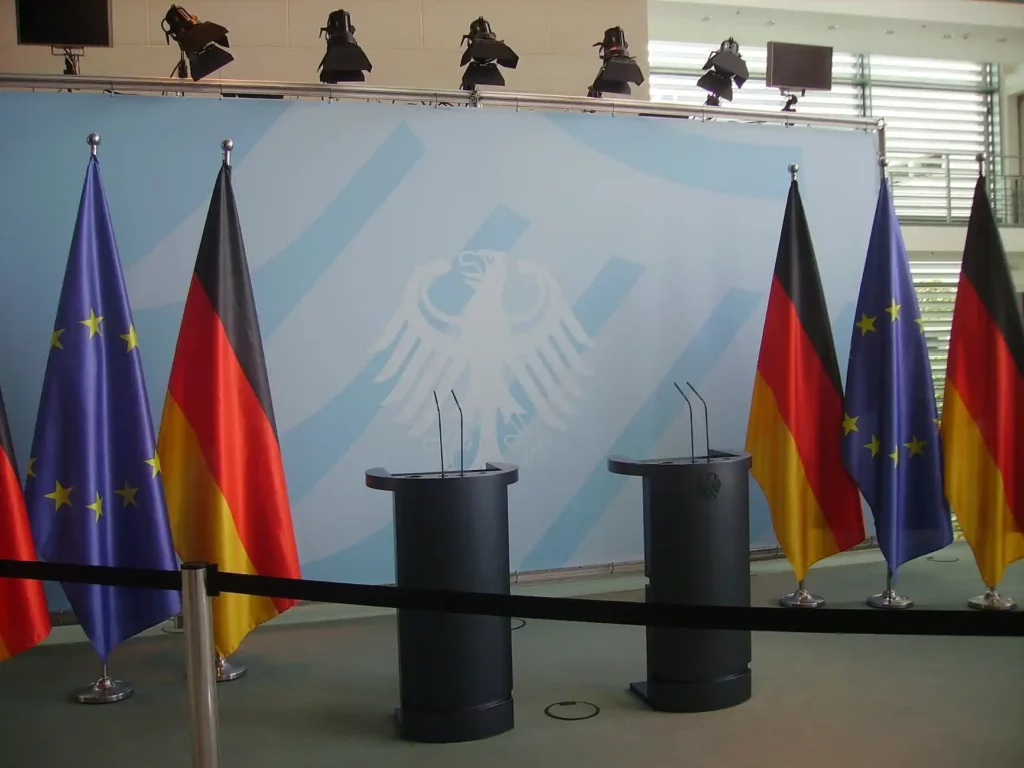
“The Russian Federation, the United Kingdom of Great Britain and Northern Ireland, and The United States of America reaffirm their commitment to seek immediate United Nations Security Council action to provide assistance to Ukraine, as a non-nuclear-weapon state party to the Treaty on the Non-Proliferation of Nuclear Weapons, if Ukraine should become a victim of an act of aggression or an object of a threat of aggression in which nuclear weapons are used.”
— Article 4, Memorandum on Security Assurances (“Budapest Memorandum”), 1994
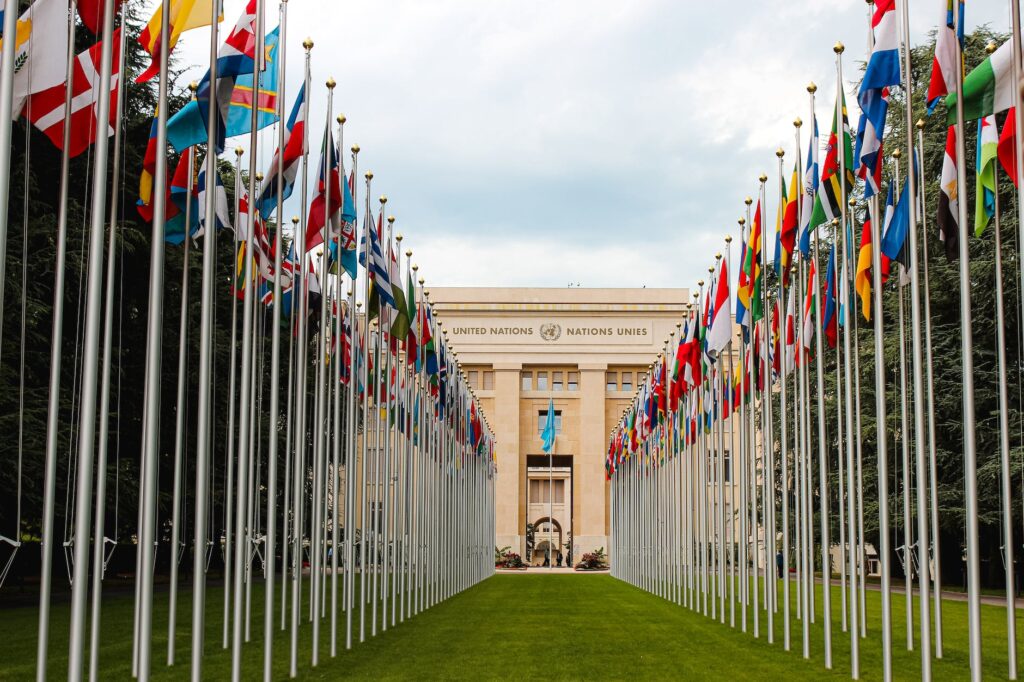
International Organisations
Several organizations provide platforms for coordination, dialogue, and collaborative efforts, emphasizing the shared responsibility of the international community in promoting the safety and security of member states, and ensuring the safe and peaceful use of nuclear technology. The UN, IAEA, EU, or NATO, are just some of the many examples with a significant influence on nuclear weapons politics.
- Megan Dee (2015) The EU’s multilateralist combat against the proliferation of WMD in the NPT: mirroring the Grand Bargain, European Security, 24:1, 1-18, DOI: 1080/09662839.2014.948864
- Tarja Cronberg (2017) No EU, no Iran deal: the EU’s choice between multilateralism and the transatlantic link, The Nonproliferation Review, 24:3-4, 243-259, DOI: 1080/10736700.2018.1432321
- Zwolski, Kamil. Unrecognized and Unwelcome? The Role of the EU in Preventing the Proliferation of CBRN Weapons, Materials and Knowledge, Perspectives on European Politics and Society, 12:4, 477-492, DOI: 1080/15705854.2011.622962
- https://www.nonproliferation.eu
- Buteux, Paul. Strategy, Doctrine, and the Politics of Alliance: Theatre Nuclear Force Modernisation in NATO. Boulder: Westview Press, 1983.
- Buteux, Paul (1983). The politics of nuclear consultation in NATO, 1965-1980. Cambridge University Press.
- Heuser, Beatrice (1999). NATO, Britain, France, and the FRG: Nuclear Strategies and Forces for Europe, 1949–2000. London: Palgrave Macmillan.
- Andreas Lutsch (2016) Merely ‘Docile Self-Deception’? German Experiences with Nuclear Consultation in NATO, Journal of Strategic Studies, 39:4, 535-558.
- Timothy Andrews Sayle (2020) A nuclear education: the origins of NATO’s Nuclear Planning Group, Journal of Strategic Studies, 43:6-7, 920-956.
- Treverton, Gregory F. “Managing NATO’s Nuclear Dilemma.” International Security, vol. 7, no. 4, 1983, pp. 93–115.
“The Nuclear Planning Group acts as the senior body on nuclear matters in the Alliance and discusses specific policy issues associated with nuclear forces. The Alliance’s nuclear policy is kept under constant review, and is modified and adapted in light of new developments.”
— NATO, 2022
Nuclear Ages
The concept of the three nuclear ages refers to distinct periods in the history of nuclear weapons development and deployment. The first nuclear age began with the use of atomic bombs by the United States in Hiroshima and Nagasaki during World War II. The second nuclear age emerged captures the height of the Cold War. The third nuclear age, often considered to have started in the early 21st century, involves new challenges such as the proliferation of nuclear capabilities to additional states, regional tensions, and the potential for non-state actors to acquire nuclear weapons.
- Gar Alperovitz, Atomic Diplomacy: Hiroshima and Potsdam; The Use of the Atomic Bomb and the American Confrontation with Soviet Power (New York: Vintage, 1965).
- Herbert Feis, The Atomic Bomb and the End of World War II (Princeton, NJ: Princeton University Press, 1966).
- Gregg Herken, The Winning Weapon: The Atomic Bomb in the Cold War, 1945–1950 (Princeton, NJ: Princeton University Press, 1980)
- The Lure and Pitfalls of MIRVs: From the First to the Second Nuclear Age. Edited by Krepon, Michael, Travis Wheeler and Shane Mason. Washington, D.C.: Stimson Center, May 2016.
- Ward Wilson; The Winning Weapon? Rethinking Nuclear Weapons in Light of Hiroshima. International Security2007; 31 (4): 162–179.
- Paul Bracken, The Second Nuclear Age: Strategy, Danger, and the New Power Politics (New York: St. Martin’s Press, 2012).
- Andrew Coe and Jane Vaynman, “Superpower Collusion and the Nuclear Nonproliferation Treaty,” Journal of Politics 77, no. 4 (2015): 983–997.
- Goettemoeller, Rose. (1992). Strategic Arms Control in the post-START Era. London: Brassey´s/IISS
- Halliday, Fred. (1986) The Making of the Second Cold War.London: Verso
- Joseph S. Nye, “Nuclear Learning and US-Soviet Security Regimes,” International Organization 41, no. 3 (1987): 371–402.
- Adérito Vicente, Polina Sinovets, Julien Theron (2023). Russia’s War on Ukraine: The Implications for the Global Nuclear Order. Springer Cham.
- Futter, Andrew ; Zala, Benjamin. / Strategic non-nuclear weapons and the onset of a Third Nuclear Age. In: European Journal of International Security. 2021.
- Krepinevich Jr., Andrew F. ‘The New Nuclear Age’. Foreign Affairs 101, no. 3 (2022).
- Narang, V. & Sagan, S. (2023). The Fragile Balance of Terror: Deterrence in the New Nuclear Age. Ithaca, NY: Cornell University Press. https://doi.org/10.1515/9781501767036
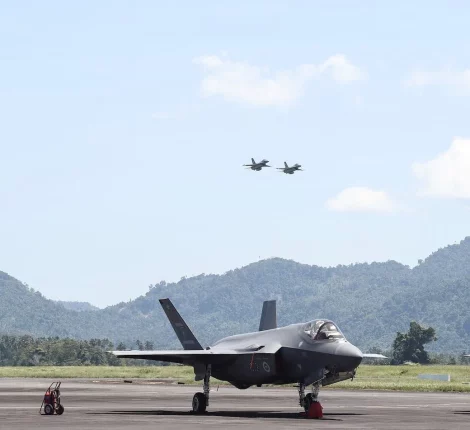
“The world is on the cusp of a new nuclear age. China, Russia, and the United States are in the midst of a renewed arms race and nuclear modernization programs. Further, three new nuclear weapons powers have emerged since the end of the Cold War: India, Pakistan, and North Korea.”
— Vipin Narang and Scott D. Sagan, 2023
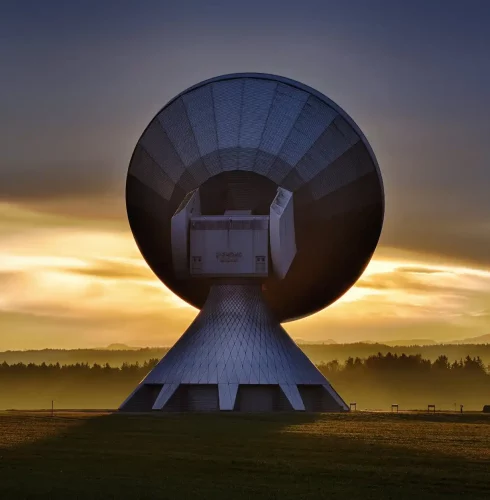
Related Technologies
The integration of newly emerging technologies creates a complex and interconnected landscape, which shapes the evolving nature of nuclear deterrence, arms control, and strategic stability. For example, artificial intelligence has implications for command and control systems, potentially enhancing decision-making processes, and space-based technologies contribute to surveillance and communication capabilities, impacting early warning systems and strategic communications.
- Missile Defense Systems at a Glance. Arms Control Association, https://www.armscontrol.org/factsheets/missiledefenseataglance
- Matthew Bunn and Kosta Tsipis. 8/1983. Ballistic Missile Guidance and Technical Uncertainties of Countersilo Attacks, Pp. 164. Cambridge, MA: Program in Science & Technology for International Security, Massachusetts Institute of Technology.
- Hildreth, S. A., & Woolf, A. F. (2002, February). Missile defense: the current debate. Congressional Research Service, Library of Congress.
- George Lewis and Frank von Hippel, “Limitation on Ballistic Missile Defense – Past and Possibly Future,” Bulletin of the Atomic Scientists, 74(4), 2018, pp.199-209.
- Lewis, G. and von Hippel, F. (2018) ‘Limitations on ballistic missile defense—Past and possibly future’, Bulletin of the Atomic Scientists, 74(4), pp. 199–209.
- Lisbeth Gronlund & David C. Wright (1992) Depressed trajectory SLBMS: A technical evaluation and arms control possibilities, Science & Global Security, 3:1-2, 101-159.
- Schiller, Markus (2022, April). Missile Identification and Assessment. International Institute for Strategic Studies. https://www.iiss.org/globalassets/media-library—content–migration/files/research-papers/2022/04/missile-identification-and-assessment.pdf
- Wilkening, D. (2019) ‘Hypersonic Weapons and Strategic Stability’, Survival, 61(5), pp. 129–148.
- Mark Fitzpatrick (2019) Artificial Intelligence and Nuclear Command and Control, Survival, 61:3, 81-92, DOI: 10.1080/00396338.2019.1614782
- James Johnson (2020) Deterrence in the age of artificial intelligence & autonomy: a paradigm shift in nuclear deterrence theory and practice?, Defense & Security Analysis, 36:4, 422-448.
- Johnson, James, AI and the Bomb: Nuclear Strategy and Risk in the Digital Age (Oxford University Press, 2023).
- Rautenbach, P. (2022). Machine Learning and Nuclear Command. https://www.cser.ac.uk/media/uploads/files/Machine_Learning__NC3__The_Risk_of_Integration.pdf
- Rautenbach, P. (2022). On Integrating Artificial Intelligence With Nuclear Control. Arms Control Today, 52(7), 23-26.
- Saltini, Alice (2023). AI and nuclear command, control and communications: P5 perspectives. European Leadership Network. https://www.europeanleadershipnetwork.org/wp-content/uploads/2023/11/AVC-Final-Report_online-version.pdf
- Mutschler, M.M. (2013) ‘Space Weapons and Arms Control’, in Mutschler, M.M. (ed.) Arms Control in Space: Exploring Conditions for Preventive Arms Control. London: Palgrave Macmillan UK (Palgrave Studies in International Relations Series), pp. 104–148.
- Raju, Nivedita; Erästö, Tytti (2023) The Role of Space Systems in Nuclear Deterrence. Solna, SIPRI. https://www.sipri.org/publications/2023/sipri-background-papers/role-space-systems-nuclear-deterrence.
- Thomas G. Roberts, “Why a Space-Based Missile Interceptor System is Not Viable,” Bulletin of the Atomic Scientists, 74(4), 2018, pp.238-242.
- James Acton, “Escalation through Entanglement: How the Vulnerability of Command-andControl Systems Raises the Risks of an Inadvertent Nuclear War,” International Security 43:1 (Summer 2018), pp 56-99.
- Fiona S. Cunningham; Strategic Substitution: China’s Search for Coercive Leverage in the Information Age. International Security 2022; 47 (1): 46–92. doi: https://doi.org/10.1162/isec_a_00438
- Erik Gatzke and Jon R. Lindsay, “Thermonuclear Cyberwar,” Journal of Cybersecurity, Feb 2017, pp.1-12.
- James J. Wirtz and Jeffrey A. Larsen (2022). Nuclear Command, Control, and Communications: A Primer on US Systems and Future Challenges. Washington, D.C.: Georgetown University Press.
